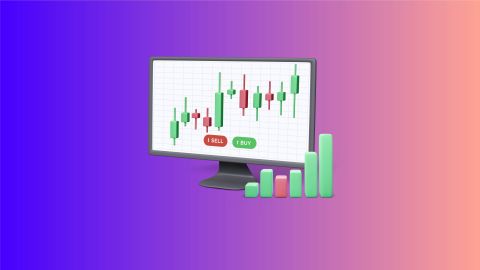How the call option works?
Options are financial contracts where two investors take opposite views on an asset’s price movement. One expects the price to rise, while the other predicts a fall. The underlying asset can be a stock, bond, commodity, or another investment instrument, making options a strategic tool for profit or risk management.
Call option example
Imagine you are an investor in the Indian stock market, and you are optimistic about the future prospects of XYZ company, whose current stock price is Rs. 100 per share. You decide to purchase a call option with a strike price of Rs. 110, expiring in three months, at a premium of Rs. 5 per share.
Now, there are a few scenarios to consider:
- Stock price below strike price (Rs. 100):
If the stock price remains below the strike price (Rs. 110) until the option expires, you are not obligated to exercise the option. In this case, you may choose not to exercise the call option, allowing it to expire worthless. The loss would be limited to the premium paid (Rs. 5 per share).
- Stock price above strike price (Rs. 120):
If the stock price rises to Rs. 120, you can exercise the call option, buying shares at the strike price of Rs. 110 and immediately selling them at the market price of Rs. 120. Your profit per share would be Rs. 10 (Rs. 120 - Rs. 110), minus the premium paid (Rs. 5), resulting in a net profit of Rs. 5 per share.
- Stock price significantly above strike price (Rs. 130):
The call option provides leverage, allowing you to benefit from significant price movements. In this case, if the stock price is Rs. 130, your profit would still be Rs. 10 per share (Rs. 130 - Rs. 110), but the percentage return on investment would be higher due to the initial premium paid.
What is a long call option?
A long call option is a bullish strategy where an investor acquires a call option with the expectation that the price of the underlying asset will increase. This strategy offers the buyer the right to purchase the asset at the specified strike price before the option's expiration. Let us break down the key components of a long call option:
- Buyer's perspective:
buyer, also known as the holder or owner of the call option, pays a premium to the seller (writer) for the right to buy the underlying asset at the strike price. This premium represents the cost of obtaining the option.
- Profit potential:
The profit potential for a long call is theoretically unlimited. As the price of the underlying asset rises, the buyer can exercise the option and realise a profit by selling the asset at a higher market price.
- Limited risk:
The risk for the buyer is limited to the premium paid for the call option. Even if the market moves against them, the most they can lose is the initial investment.
- Break-even point:
The break-even point for a long call option is the strike price plus the premium paid. The underlying asset's price must exceed this level for the trade to be profitable.
- Time sensitivity:
Long call options have a time limit, known as the expiration date. The buyer must see the expected price movement within the specified timeframe, as the option loses value over time, particularly as it approaches expiration.
Additional read: future and options trading
What is a short call option?
Conversely, a short call option involves selling a call option with the anticipation that the price of the underlying asset will either remain stable or decrease. This strategy is employed by investors who believe the asset's price will not reach the strike price before the option expires. Here are the key aspects of a short call option:
- Seller's perspective:
The seller, also known as the writer, receives a premium from the buyer in exchange for the obligation to sell the underlying asset at the specified strike price, should the buyer choose to exercise the option.
- Limited profit potential:
The profit potential for a short call is capped at the premium received. If the market moves favourably, and the option expires worthless, the seller retains the premium as their profit.
- Unlimited risk:
Unlike the limited risk in a long call, the risk for a short call is theoretically unlimited. If the market price of the underlying asset rises significantly, the seller may face substantial losses.
- Break-even point:
The break-even point for a short call option is the strike price plus the premium received. The underlying asset's price must not exceed this level for the trade to be profitable.
- Time decay advantage:
Short call options benefit from time decay. As time passes, and the option approaches expiration, its value decreases. This can work in favour of the seller if the market conditions remain favourable.
Long call options are utilised by investors seeking to capitalise on upward price movements, offering the potential for significant gains with limited risk. On the other hand, short call options involve higher risk, as sellers aim to profit from stable or declining asset prices, but with capped potential gains. Both strategies require careful consideration of market conditions, risk tolerance, and effective timing.
When should you buy a call option?
A call option is worth buying when you expect the asset’s price to rise before expiry. You can buy at the strike price and sell at a higher market price for profit. Even if the asset’s value drops, your loss is limited to the premium paid, offering leverage and minimising risk for lower investments.
When should you sell call option?
You should sell a call option when you anticipate a price drop in the asset. If prices stay below the strike price, you retain the premium. Call options can be sold as either naked or covered. Naked calls carry high risk without asset ownership, while covered calls limit gains but offer safer returns from premium income.
Conclusion
Call options provide traders with a flexible tool to capitalise on price movements in the financial markets. However, it is essential for investors to carefully consider the associated risks, employ risk management strategies, and stay informed about market conditions when trading call options.





